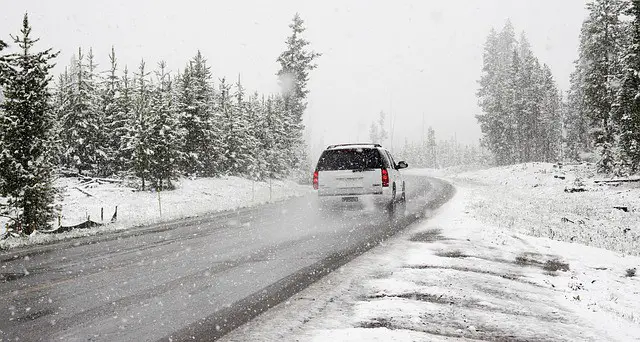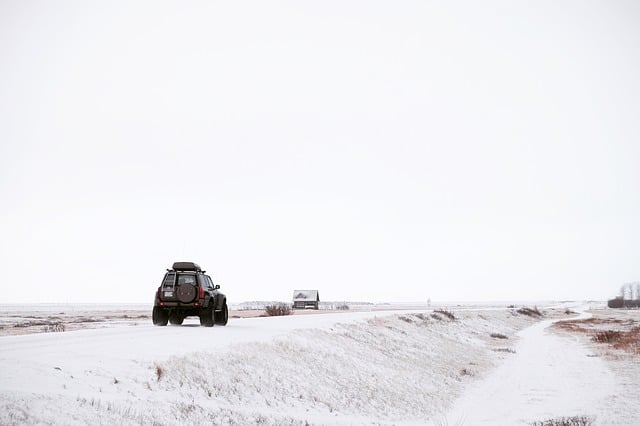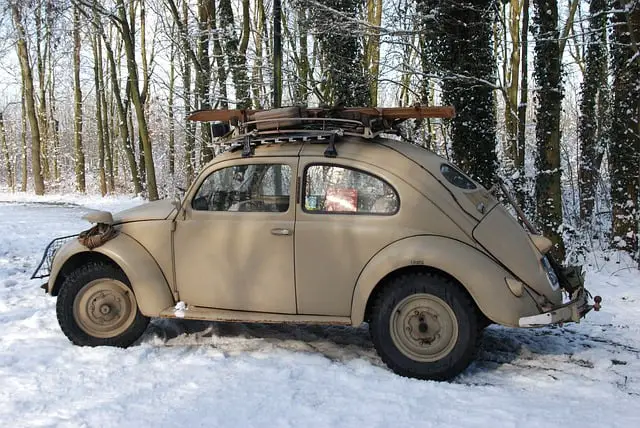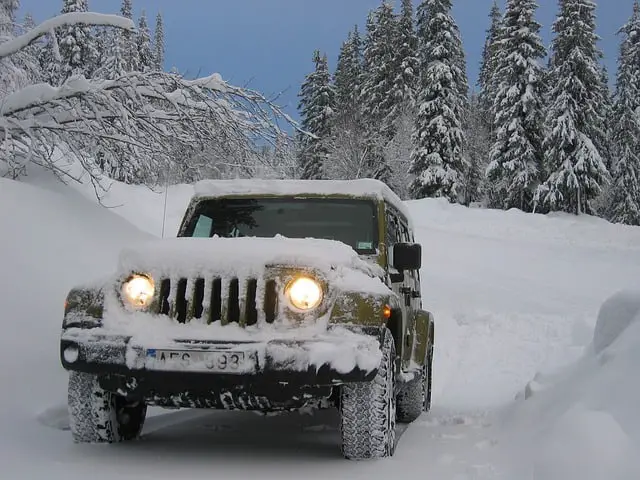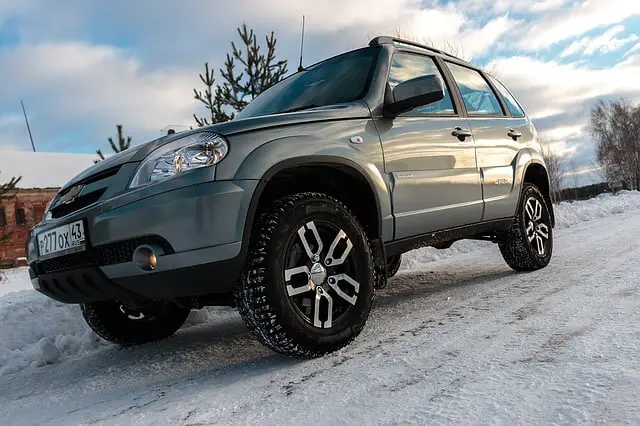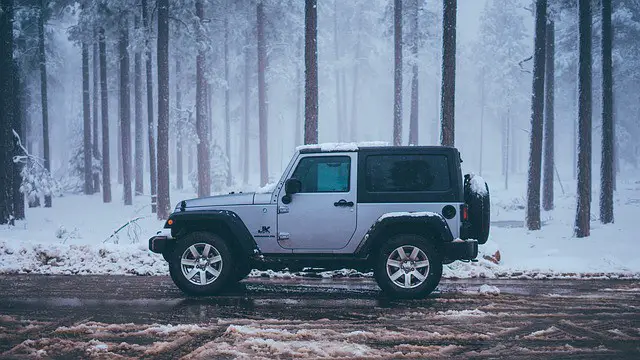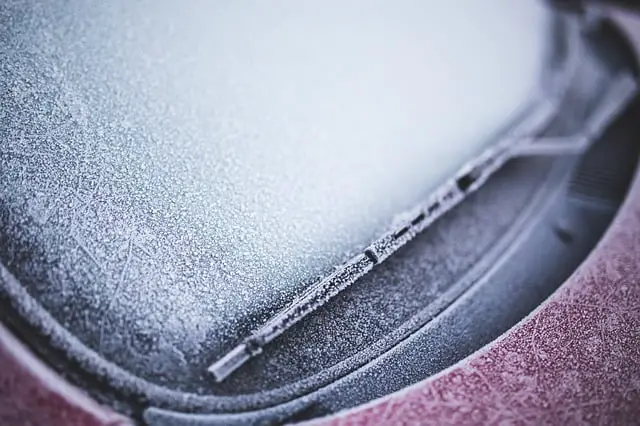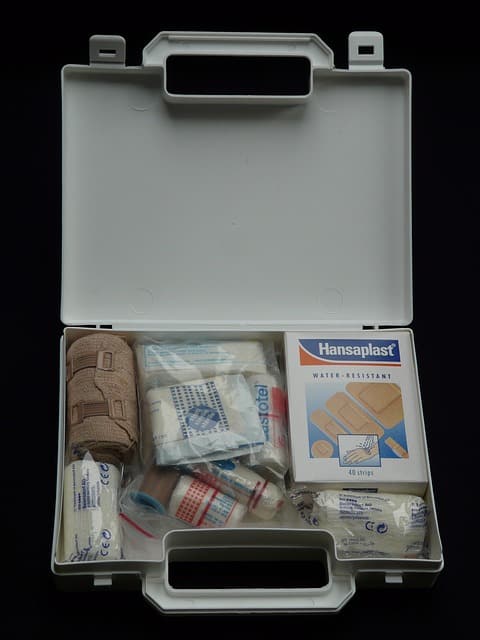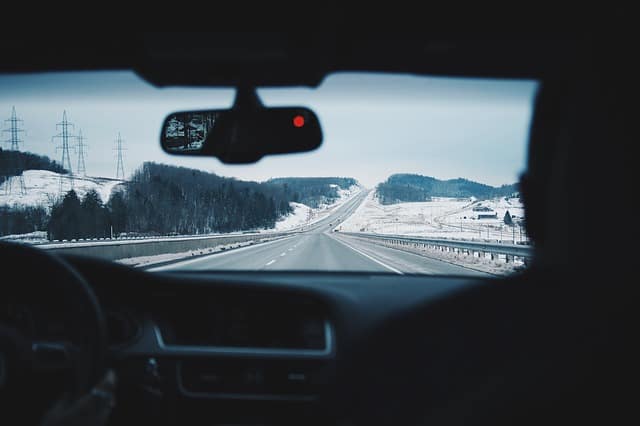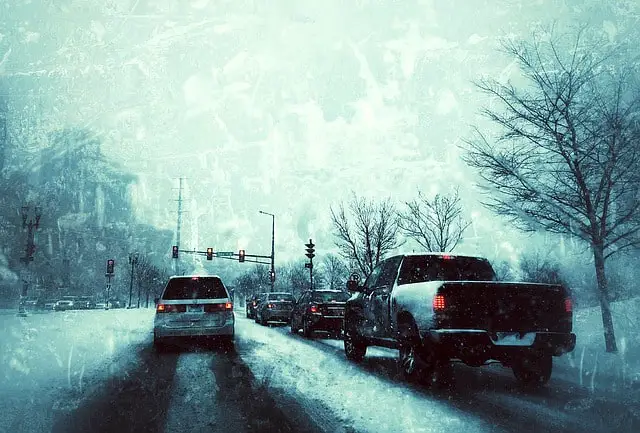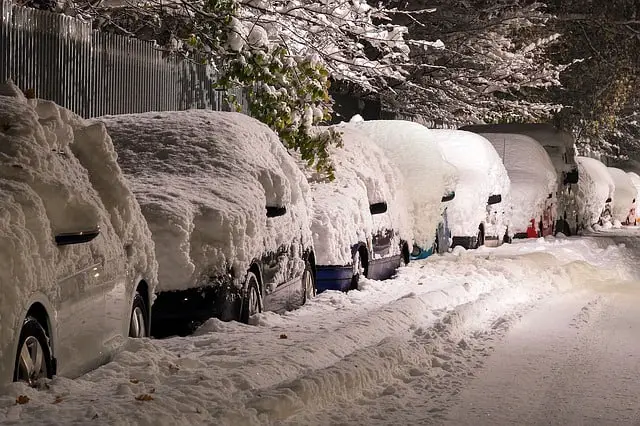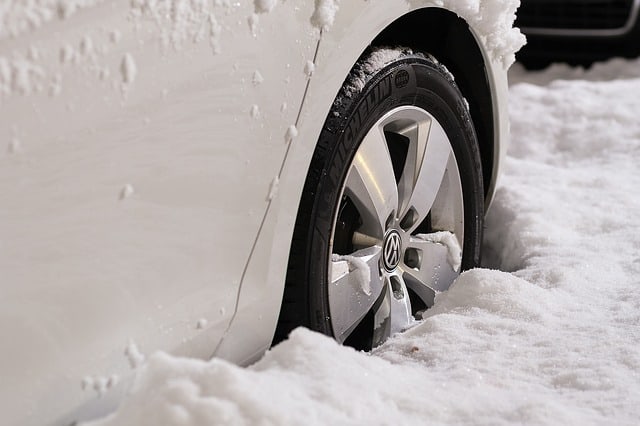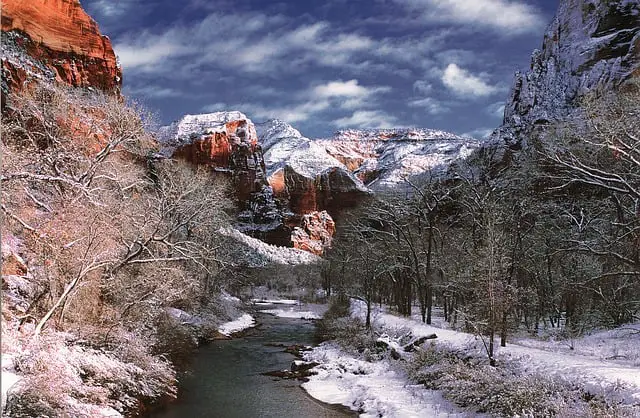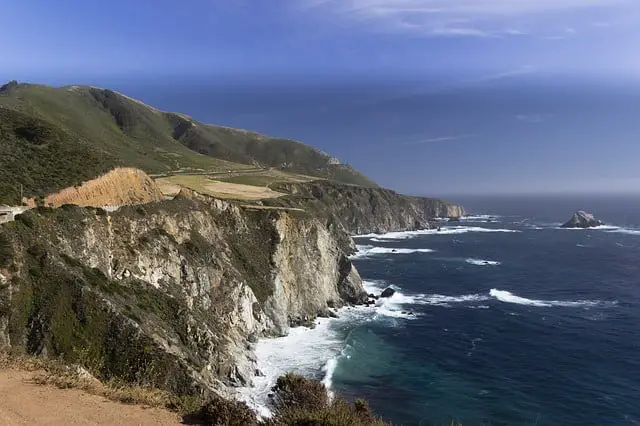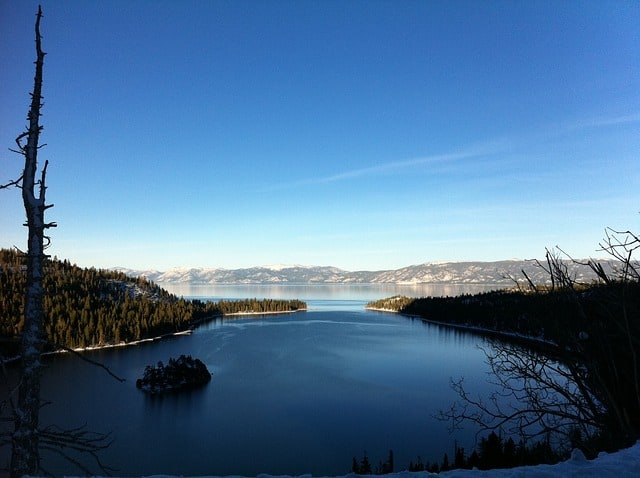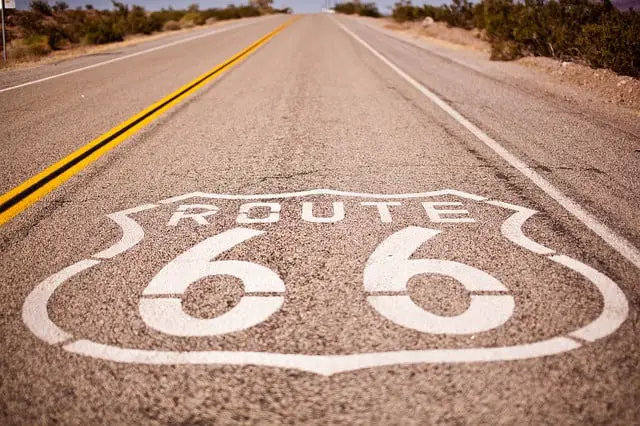Whether you’re an experienced adventurer or first-time explorer, road trips are a great way to explore the world through a different lens. Road trips give you the opportunity to discover different parts of the world at your own pace, taking in the wonders of nature and immersing yourself in different cultures.
When we think about road trips, most of us imagine warm, summer days driving with the top down. But winter road trips can be just as fun and exciting. There’s something magical about driving through the snow-covered country, stopping to look at the stars while drinking hot chocolate under a cozy blanket.
Although it would be great to have perfect weather all year round for our road trips, we still have the winter weather to contend with. And planning a road trip during the winter comes with a different set of challenges.
You have to make sure your vehicle is capable of standing up to the elements, pack the right outfits and plan out your safety equipment because you can never be too cautious when driving through snow-filled roads. To make sure you get the most out of your winter road trip, it’s important to be totally prepared. So below are a couple of tips to help you get started.
Planning a Winter Road Trip
To make sure your winter road trip goes smoothly, you have to arm yourself with a plan. To develop your plan, you need to answer a couple of questions:
- What’s my destination?
- How long will I be gone for?
- What should I expect for weather conditions? Should I expect a winter storm? Is it going to get so windy that it pulls down trees and makes driving impossible?
- Who am I going with? What needs should I anticipate?
- What emergency services exist between my start location and my final destination?
- How close are the gas stations?
- How many motels, hotels or inns are on my route? Is the area a safe place to spend the night? What services do they offer? What form of payment do they accept? If I can’t get a hotel, what’s my next best option?
- What medical facilities are on my route? Do they offer emergency services?
- How much food will I need to have with me while I’m on the road? Where can I stock up in case I run out?
- What kind of safety gear will I need? What emergency tools or equipment should I look into getting?
This list is by no means exhaustive, but getting started with these questions will get you well on your way to being fully prepared to take on that winter road trip.
A great way to anticipate the weather conditions on your trip is to look up adventurer blogs online to see what they’ve experienced. Folks are always willing to share their honest experiences. You’ll find information on what taking a bathroom break out on the road is like, what terrains you should stay away from and the best views during winter. So these adventurer blogs are the best place to get started.
It’s also important to know that everyone’s experiences are different, so talk to as many people as possible to get the best picture of what to expect and how to properly plan for it.
Feel free to pack a good digital camera while you’re at it. A high resolution one where possible, as some views during the winter simply cannot be described. Also, get a journal to document your own experiences so you can share them with loved ones when you return.
Be sure to stock up on your favorite music, movies, and books that will help you pass the time if you get snowed in or stuck somewhere for longer than expected. Remember to pack extra batteries for your camera or flashlight and a power bank for your phone. You never know when they will come in handy!
Finally, you’ll also want to pay a visit to the doctor’s office to get yourself checked and cleared for travel. This is the most important aspect of preparation, but it tends to get overlooked. Have a chat with your Doctor and ensure you take care of any underlying conditions that might affect your road trip.
Getting Your Car Ready for Winter
Now you know what supplies to put together for your trip, it’s time to look at getting your car ready for the winter season. Your car will be dealing with some intense elements like the cold, wind and snow, so here are some tips to help get your car ready.
Pick the Right Vehicle
Not all vehicles can withstand the snow. The worst of them all is Rear Wheel Drive (RWD) cars. If you happen to drive through a pothole covered by snow, you’ll need the torque from a Front Wheel Drive (FWD) or even better, an All-Wheel Drive (AWD)/Four Wheel Drive (4WD) car to propel you forward.
When you hit the gas in an RWD car, the rear wheels spin, not the front. This means you’ll slide in the snow making it hard to maneuver your car. In simple terms, stay away from convertibles, muscle cars or any type of high-performance sports car.
When picking out a car for your road trip, put AWDs such as truck-based SUVs or better yet, Crossover SUVs at the top of your list.
You’ve Got Your Car, Now Let’s Carry Out Some Checks
Start by inspecting the oil using the dipstick and top it up if needed. Remove the dipstick and wipe it off on a rag. If the rag is black, or you notice some type of sediment, it means your car is due for an oil change. If your car is a newer model, it should have an engine oil indicator on the dashboard. Changing your oil on time will save you a ton of money in expensive car tune-ups and will extend the life of your vehicle. To get an accurate reading, check the oil first thing in the morning.
Next, let’s check your tires. Make sure the tires have the right amount of pressure so they don’t burst while driving. You can easily do this using the pressure gauge at your local gas station or you can even buy one online.
If you’re not sure what to look for, open the door on the driver’s side and take a look at the sticker on the door jamb. You’ll find information on the recommended pressure for your car. Also, check the tread for wear and replace them if you identify any. For a long winter road trip, consider buying yourself new winter tires.
Aside from the engine oil, there are other fluids you should check. These include the radiator fluid, brake fluid, transmission fluid, windshield washer fluid and power steering fluid.
Other components of the car you want to make sure are in good condition include the headlights and brake lights, brakes, batteries and windshield wipers. These should all be replaced if they’re faulty.
Check the belts in your car, replace or clean the air filter and finally, check and replace your spark plugs as needed. Also, have your mechanic do a check of your exhaust system, your heating system and your defroster to be sure they’re in tip-top shape for your winter road trip.
What to Keep in Your Car Emergency Kit
Before you embark on a winter road trip, be sure to stock up your emergency kit. Even though your car is fully prepared, you should also have an emergency kit, in the event of, well, an emergency!
A First Aid Kit
This should contain sterile gauze, a few packs of elastic bandages, antibiotic cream, a pack of antiseptic wipes, a few adhesive and non-adhesive dressings for burnt skin, crepe bandages as well as sterile eye dressings.
Other items to put in your first aid kit include a few pairs of surgical gloves, some cotton swabs, a pair of tweezers, a pair of sharp scissors, some safety pins, a thermometer and a pair of forceps. You should also include aspirin or any mild pain relief medicine and of course, a bottle of clean drinking water.
Here’s everything else your emergency kit needs:
- Flashlight and a set or two of extra batteries
- Reflective caution triangles
- 5lb fire extinguisher
- Swiss army knife
- Safety gloves for when you need to change the tires or lift something heavy
- Detailed map of your travel route
- Heavy-duty booster cable
- Duct tape
- Pliers
- Screwdriver
- Rain poncho
- Ice scraper
- Foam tire sealant
- Spare tire
- Jack and lug wrench to change tires
- A portable snow shovel
- Jumper Cables
It can feel a little overwhelming to put all these items together. Luckily, you can buy an already packed emergency kit. This will make your road trip a little less stressful!
Another important item to have in your emergency kit is your emergency contact’s information. If you have a unique health condition or a rare blood type, you’ll also want to have that information on hand so the right help can be administered to you in an emergency.
When driving through a town, make sure you have the contact information for the local garage, fire station, police station and hospital, especially if you’re driving through a rural area. You can even get this mapped out prior to commencing your trip. This will definitely come in handy if things take a turn for the worse.
How to Drive on Snow and Ice
The ability to drive safely on snow-covered roads is a skill you can develop with a little studying and practice. Road-users in regions where it snows a lot often opt for a course in winter driving. No one wants their holiday memories ruined by an accident that could’ve been avoided with a little training and preparation.
The first thing you want to do is purchase those snow tires. And yes, it’s absolutely necessary in case you’re wondering! Using everyday tires during the winter is like wearing sandals in the snow. Not a great idea! Winter tires are designed with superior tread patterns to have enhanced grip and provide additional traction for when you drive on ice-covered roads.
Driving on icy roads during your winter road trip can be tricky. To avoid accidents and make sure you have a great road trip, here are a few tips to help you with your technique:
- Try accelerating and decelerating slowly. This prevents skidding and helps you maintain traction as you drive.
- Do not set your car to cruise control when driving during the winter. Instead, drive slowly as it can take longer to come to a complete stop on an ice-covered surface.
- When driving, the heel of your foot should be placed on the floor while the ball should be used to apply pressure on the brake.
- Be careful when warming up your car in an enclosed space, it could lead to carbon monoxide poisoning.
- Never stop when driving up a hill, or drastically accelerate. The former can cause you to slide down and lose control. The latter can cause your wheels to start spinning.
- Allow plenty of space when driving behind a car. Leave at least 8-10 seconds to come to a stop to avoid nasty bumps.
- When approaching a red light, try rolling forwards by taking your foot off the gas pedal, instead of using the brake pedal immediately, so you don’t have to come to a complete stop before the light turns green again. Try as much as possible to avoid using your parking brake during the winter as well.
- To avoid your gas line freezing up, keep your gas tank at least half-full at all times.
AAA is a useful site to get more tips for driving during winter. For more information, be sure to visit them.
What to Do if You Get Stuck in Snow
When on your winter road trip, getting your car stuck in the snow is a possibility. But there’s no need to panic! Remember you have snow tires that are helping with traction and grip, so you’ve got the basics covered.
If your instinct is to dig yourself out, you wouldn’t be wrong. When this happens, reach into your emergency kit and grab your shovel. It’s time to do some digging.
The Shovel Technique
When a car gets stuck in snow, underneath and around the tires tend to become surrounded by ice. Remember to grab a pair of safety gloves to protect your hands and be careful not to puncture your tires with the shovel.
Walk around the car, take a look at the wheels and make sure they’re not stuck to anything that will cause the wheels to spin, thereby causing your car to sink even deeper. Also, check to make sure your tires are not stuck to debris that can puncture them.
As you dig, be sure to clear a path that’s long enough for your wheels to move backward and forwards a little bit – picture a little runway. As well as this, make sure you don’t have any snow obstructing your exit, or all your digging will be pointless. Finally, check your tailpipe is not blocked by ice as this could lead to carbon monoxide poisoning due to gas build up inside the vehicle.
Now to get the car out!
First, roll down your windows so you can hear what sounds the car makes as you proceed to make your exit. Gain traction by moving the car backward and forward by applying a little pressure on the gas pedal. Continue to do this for a while without revving up the engine until the snow breaks off and you’re free to go.
Introducing Traction
Another option is to add a little bit of traction with something coarse like cardboard or sand. Alternatively, you can use tire chains. These will go on all four tires if you have enough but if not, they should go on the rear tires for rear wheel drives (RWD), and on the front tires for front wheel drives (AWD).
When chaining up the tires, ensure they fit tightly against the tire tread. Next, drive forward a few feet and check if the chains have slackened. If they have, tighten them up and continue driving until you think you’re safe enough to take the chains off.
5 Amazing Winter Road Trips in the U.S.
The best part of road tripping during the winter is taking in all those scenic routes at a more leisurely pace, without the hustle and bustle of the summer crowd. Hotels and Inns are quieter during the winter, which means you’ll get the best prices.
Here are 5 amazing winter road trips you should consider when planning your next winter road trip:
Manhattan to Bradford
Enjoy the picturesque view of the Norman Rockwell countryside by getting on the I-80 and driving 348 miles heading Northwest. You might even get the opportunity to fit in some shopping on Fifth Avenue or find yourself skating at the Rockefeller Center. And why not stop at HoliMont and enjoy the slopes at the ski resort?
Las Vegas to Zion National Park
This is one trip you’ll never forget. The scenery is simply breathtaking as you drive the 1,200 miles from Los Angeles to Las Vegas through the I-15, down to Southern Utah, arriving at Zion National Park. The Park is 229 square miles worth of rolling beauty and stunning sandstone rock formations.
Enjoy the theatre, embark on an hour-long hike on the Canyon Overlook Trail and sum it up with a dinner at the Red Rock Grill at Zion Lodge. What could be better?
The Pacific Coast Highway – Southern California
You’ll want to start this trip in San Francisco so you can enjoy a delicious breakfast at the Ferry Building Marketplace. Be sure to drive over the Golden Gate Bridge while you’re here in addition to enjoying a viewing of the Twin Peaks.
Next, head to Half Moon Bay, a mere 45-minute drive from San Francisco. Splurge at the Ritz Carlton before heading on to Santa Barbara.
Go wine-tasting at any of the 120-wineries located here before making your way to Big Sur – 92 miles North of Santa Barbara.
Lake Tahoe National Scenic Byway
The 28-mile-long Lake Tahoe National Scenic Byway from Stateline to Crystal Bay is one winter trip you’ll never regret making. Although shorter than the other routes, it’s an experience of a lifetime, consisting of two highways, the State Route 28 and the US 50.
Take in the snow-capped peaks on the Sierra Nevada range, pay a visit to the Mt. Rose scenic look out and enjoy some alpine skiing as you take in the jaw-dropping formations of Cave Rock 13 miles south of Sand Harbor Beach.
Route 66: Illinois to California
This is a 2,400-mile road trip from Chicago to Santa Monica. Passing through 8 states (Arizona, California, Illinois, Kansas, Missouri, New Mexico, Oklahoma and Texas), across 3 different time zones, it presents travelers with incredible views in the winter time.
Go ahead and plan a stop at the museum of science in Chicago, visit the Grand Canyon National Park and the old mining town of Oatman.
Ready to Go?
Winter time is considered a time to stay inside and hibernate until the warmer months come around. But with so many beautiful, adventurous road trips to take, why miss out on a perfect opportunity to create some new winter memories?
Do something different this year and plan a fun winter road trip for your friends and family. It’s time to see the world through snow-dusted lenses!

